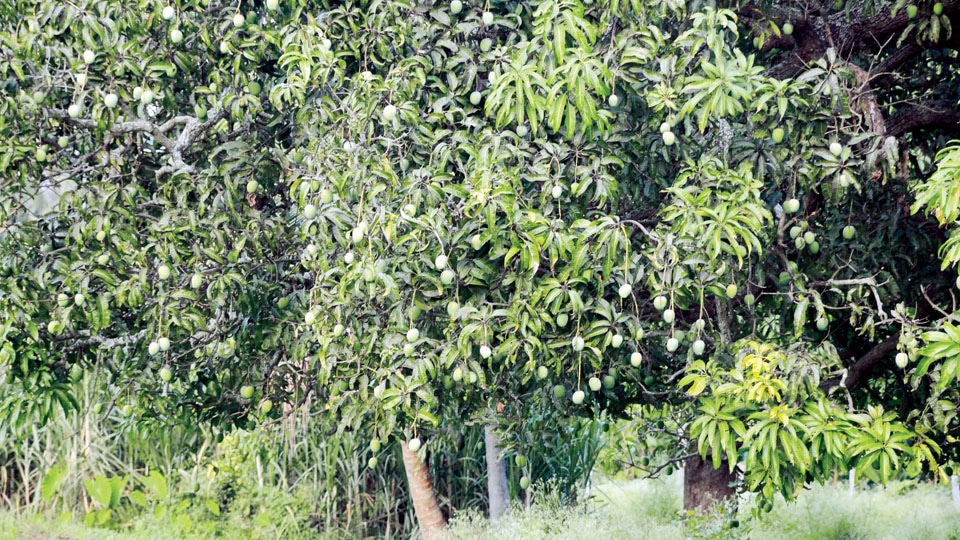This April, shell out more to relish the king of fruits
Mysore/Mysuru: Summertime is synonymous with mangoes. Every year, mango trees are expected to begin flowering in December, with many unripe fruits in March or so. April and May is peak mango season.
But recently, there have been inconsistencies in the behaviour of this tree. Late flowering of the fruit and the resultant delay in harvest has hit the internal market that is worth crores of rupees. These changes in the flowering and fruiting patterns are due to climate change and unseasonal rains that lashed the mango-producing Mysuru region after October.
Compared to last year, the production will be significantly low and as a result, eating mangoes this summer will be an expensive affair. Normally, flowering begins from Jan. 15 and lasts till Feb. 15. But this year the change in climatic conditions has disturbed the flowering cycle.
Last year too, mango yield saw steep decline due to delay in flowering. In fact, the mango production has been on the decline since 2016 due to deficit rainfall, say growers. A Technical Committee constituted by the Government Mango Board has termed 2022 as an ‘off year’ for the beloved fruit.
The major concern of experts is the high level of moisture in the soil, officials from the Karnataka State Mango Development and Marketing Corporation Limited (KSMDMCL) said.
Unseasonal rains have hampered the flower initiation process. Despite winter setting in in December, it was still raining in many parts due to which congenial weather conditions have not been created for the flowering process.
“Dry and cold weather is necessary for mango flowers to blossom. As this year the production is likely to be hit, growers can contact the Horticulture Department for certain measures to be followed,” said K. Rudresh, Deputy Director of Horticulture Department.
According to experts, the flower initiation process begins in November-December months. Last December though good vegetative growth was observed, there is no guarantee that it will give a good yield. Maximum yield is indicated only when there is maximum flowering.
Mangoes are grown in Mysuru at Nagavala, Benkipura, Halebeedu, Bilikere, Bettadabeedu, Beerihundi, Hullahalli and other villages. The fruits arrive at Mysuru markets from Nanjangud and surrounding areas, Yelwal, Bilikere, Hura, Herale, Hullahalli, Hunsur, K.R. Nagar, H.D. Kote, Gundlupet, Chamarajanagar, Channapatna and Ramanagara. Varieties like Badami, Raspuri, Malgoa, Totapuri, Mallika, Dasheri and others have made a name.
According to the statistics available, mango is grown in over 4,500 hectares in Mysuru District as a horticulture crop. Annually, these mango-producing regions yield over 7,000 to 8,000 metric tonnes of the fruit. Statewide, the horticulture experts are forecasting a yield of about 7 to 8 lakh tonnes this year while last year, the State produced around 15 lakh tonnes of mangoes.








Recent Comments